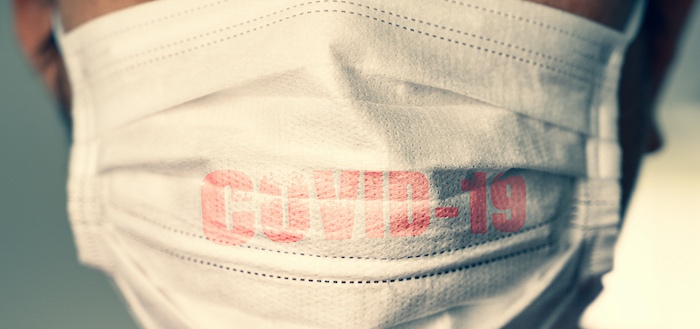Libby, Montana Residents Face Unique COVID-19 Challenges

As coronavirus cases increase in the United States, Libby, MT faces a unique challenge. Many Libby residents are at high risk of COVID-19 health complications. The increased risk is a result of Libby’s asbestos history.
Libby, MT is home to a vermiculite mine that exposed thousands of residents to asbestos. Town residents now face high rates of asbestos-related disease. These diseases may put victims at risk of severe COVID-19 complications. They may also challenge recovery.
Request a Free 2024 Mesothelioma Guide
Libby’s History of Asbestos Exposure
A vermiculite mine in Libby, MT exposed residents to asbestos for several decades. The mine opened in 1920 and did not close until 1990. The Libby mine was contaminated with asbestos, exposing workers and residents in the town.
Thousands of Libby residents experienced asbestos exposure from working in the mine. Mining created clouds of dust that contained asbestos. As a result, people who lived and worked near the vermiculite mine were also exposed.
Families also risked secondhand asbestos exposure when miners brought asbestos fibers home on their clothes.
Although the mine was closed in 1990, asbestos continues to impact the town.
Asbestos Exposure Led to High Rates of Asbestos-Related Illness in Libby
The Libby mine disturbed asbestos fibers, creating clouds of dust containing asbestos. Contaminated vermiculite was also removed from the mine and manufactured into a variety of goods. This includes potting soil and insulation.
Many risked asbestos exposure from the mine, including:
- People who lived and worked near the vermiculite mine
- Those using products contaminated with Libby vermiculite
- Family members susceptible to secondhand exposure when miners brought asbestos fibers home on their clothing
Asbestos exposure causes a variety of asbestos-related diseases, including asbestosis, lung cancer and mesothelioma. Asbestos-related illnesses may take 10 – 50 years to develop after initial exposure.
Libby residents are still impacted by exposure that occurred many years ago. Libby residents continue to die from asbestos illnesses. Some are still being diagnosed today.
According to NPR, 1 in 10 Libby residents has an asbestos-related disease.
Lincoln County, where Libby is located, also has one of the highest asbestos mortality rates in the United States.
Libby Residents at Higher Risk of COVID-19 Complications
Several asbestos-related illnesses may weaken lung function and the respiratory system.
Libby residents with an asbestos-related disease may already experience symptoms such as:
- Body aches
- Dry cough
- Fatigue
- Shortness of breath
COVID-19 may also weaken the lungs and respiratory system. Libby residents impacted by asbestos exposure and COVID-19 could experience more intense symptoms than the average person.
Individuals with asbestos cancer and mesothelioma also have weakened immune systems. A cancer diagnosis and treatments like chemotherapy can make it more difficult for the body to fight coronavirus.
COVID-19’s Impact on Libby, Montana
In recent months, COVID-19 cases have increased in Libby. As of November 29, 2020, Lincoln County reported:
- 769 total cases since March
- 204 active cases
- 29 total hospitalizations
- 9 deaths
Lincoln County was not impacted by many cases during the spring and summer. However, cases rose significantly in the fall. Since November 1, the county has recorded more than 350 new coronavirus cases.
In mid-November, several schools in Libby transitioned to remote learning. The transition came after 100 students and staff were quarantined due to the virus.
Public health officials are encouraging testing and contact tracing in order to stop the virus’s spread.
Montana’s Governor Voices Economic Concerns
Along with health concerns, Montana’s Governor Steve Bullock has voiced concern over how COVID-19 may impact local economies. In a press conference in early November, Gov. Bullock said he is concerned about imposing strict shut-down orders without federal aid.
Montana’s economy benefits greatly from tourism, including winter skiing and other public events. Gov. Bullock said without additional funding, a stay-at-home order may put a financial burden on small businesses and workers.
Workers must also face the risk of leaving home, especially if they are compromised with asbestos illnesses.
Local Public Health Officials Recommend Libby Residents Take Precautions
Public health officials in Lincoln County continue to recommend residents take COVID-19 precautions. Officials recommend high-risk individuals avoid COVID-19 exposure by following Centers for Disease Control and Prevention (CDC) guidelines.
Mesothelioma patients and individuals with asbestos-related illnesses should understand their risk and follow recommendations. Individuals can take several steps to avoid COVID-19 exposure including social distancing, handwashing and wearing a face covering.
Lincoln County officials say all individuals should wear a face covering in public spaces. The county’s stance on face coverings is more strict than statewide regulations.
Residents should also monitor themselves for symptoms and get tested for the virus if symptoms appear. Those who come into contact with a person with COVID-19 will need to quarantine for 14 days.
The CDC also recommends maintaining a safe distance from those who are at high risk of coronavirus complications. As cases rise, Libby residents may stay safe by social distancing as much as possible and closely following public health recommendations.